1. The city of Ithaca released their 2015 Planning Board summary as part of the planning board agenda this month. Here’s some highlights –
Construction costs for projects filed in 2015 are expected to total $66.8 million. In something of a rarity, Cornell was not the big financier this year, only being attached to the $12 million Novarr/Johnson School project at 209-215 Dryden Road. The two most expensive projects are the $26.5 million Tompkins Financial Corporation HQ, and the $13.77 million 210 Hancock project.
The only other project that exceeded $2 million is the first phase of Chain Works, valued at $8.65 million for phase one, and deep in the throes of review. But for some reason, Chain Works also appears in the 2014 summary of site plan filings, so one of these reports is inaccurate. Chain Works was definitely being discussed in summer 2014, although I’m not sure when the site plan was filed.
Only 95 housing units with 155 bedrooms were approved in 2015, the majority of which were with 210 Hancock (66 units, 89 bedrooms). This is down from 129 units approved in 2014. Only 8 are owner-occupied units – the 7 owner-occupied townhomes with 210 Hancock, and 1 2-bedroom market-rate home. The other projects were the 12-unit 215-221 West Spencer Street, the 6-unit 707 E. Seneca project, 3 duplexes at 804 E. State, and the 5-unit 128 West Falls Street project.
The city pulled in $154,709 from site plan filings, down from $168,214 in 2014.
Rather uncomfortably, several projects – 416 E. State, State Street Triangle, the Herson Wagner funeral home project, a 4-unit apartment building at 525 West Green Street, and 4-story apartments at 815 South Aurora project were all withdrawn from consideration for various reasons, 5 of 16 of the site plans filed. For comparison, only 2 of the 27 filed projects were withdrawn in 2014, the cancelled boutique hotel at 339 Elmira Road, and the student housing project at 7 Ridgewood.
Although there’s less housing and the overall value of site plan filings are down, new commercial square footage is up, mostly due to Tompkins Financial’s new 110,000 SF. The increase was from 22,000 SF of retail and 3,800 SF of office space approved in 2014, to 20,563 SF of retail and 110,000 SF of office space approved in 2015.
On future projects, the city expects about 915 units of housing on the Chain Works site over 10-15 years. During 2016, the board expects that the Old Library site, the Travis Hyde proposal for Ithaca Gun, and phase III of Cornell’s Hughes Hall renovations will come up for review.
2. Looks like Cornell is starting to do some long-term planning of its housing needs. Over the course of the upcoming Spring semester, the university is expected to engage with students, staff/faculty and the wider community as it starts formulating its housing master plan for the next decade. Look at it as two things – an assessment/checkpoint on how the North and West Campus systems are doing since being completed in the early 2000s and late 2000s, and a gauge for where, when and what form new housing should take.
The nine-month meeting and planning process will be led by NYC-based U3 Advisors, who are also handling implementation of Cornell’s NYC Tech Campus currently under construction. Since 2013, U3 has also a consultant for Cornell’s plans for the long-incubating redevelopment of East Hill Plaza into the new urbanist East Hill Village.
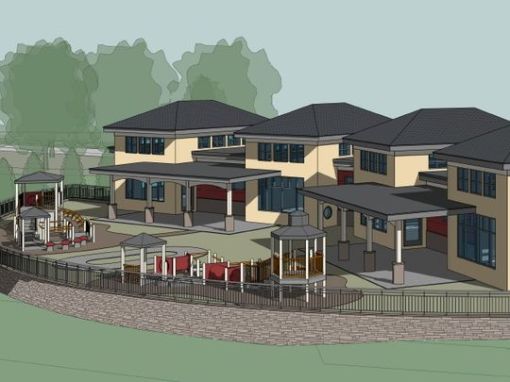
3. Over in Dryden, Tompkins-Cortland Community College (TC3) has announced plans for a $5.5 million daycare center. Initial plans call for enough room for 80 children, and would allow the school to provide daycare for infants. Most of the children are expected to be the progeny of students, but staff and faculty would also be welcome to enroll their kids, and even members of the community if there’s still room in the new facility.
Funding to the project will come in a 50-50 split being state dollars and private donations, of which about $2 million has already been secured. A further $1 million campaign is expected to be launched by June.
The project is expected to be located on the west side of the main campus building, on undeveloped land between the classrooms and the pond. Construction is expected to begin in 2017. Approvals would have to be granted by the town of Dryden’s town board. As far as I’m aware, the Voice did not received the press release that the Times and Journal did, and no information is yet available on who the architect is, or the approximate square footage.
4. For those hoping for something big in the Planning Board meeting next month, well, keep waiting. Kinda. The new items on the agenda have already been covered – the Maplewood Development by Cornell (the northwest corner and two of the 3 to 4 story-apartment buildings fall at least partially into Ithaca city — just draw an imaginary line straight north of Vine Street to get the visual), and the Maguire waterfront proposal. Quick reminder, the general order is: sketch plan, Declaration of Lead Agency, Public Hearing, Declaration of Environmental Significance, BZA if necessary, prelim approval, final approval. Here’s the formal rundown:
I. Agenda Review
II. Special Order of Business – Adequacy Discussion – Chain Works District
III. Privilege of the Floor
IV. Subdivision review
A. Preliminary and final approval for the revision of lot lines permitting Habitat for Humanity’s “Breaking Ground” duplex at 208-210 Third Street
B. Preliminary and final approval for the revision of lots lines at INHS’ 210 Hancock – this would divide the parcel into for-rent and for-sale portions, which is crucial for funding allocation (government funding is earmarked either for rent, or for sale housing, but not both).
V. Site Plan Review
A. Brindley Street Bridge – Declaration of Lead Agency in concurrence with the Board of Public Works
B. Hilton Canopy Hotel – Project Update, Conditions of Site Plan Approval, and Requested Changes
C. Parking spaces for the new duplex at 424 Dryden – Public Hearing, Declaration of Env. Signif, and recommendations to the BZA
D. Cornell Hughes Hall renovations – Declaration of Lead Agency and Public Hearing
E. Cornell Ag Quad renovations – Declaration of Lead Agency and Public Hearing
F. Sketch Plan – Cornell Maplewood Apartments
G. Sketch Plan – Maguire Automotive Project at Carpenter Business Park
5. In case you missed it this week, the Washington Post wrote about a just-published California state Legislative Analyst Office study that found that communities that welcomed market-rate housing construction tended to have lower displacement of lower-income households than communities that did not add new housing.
A copy of the study can be found here. It might come off as counter-intuitive or too simple of a breakdown of supply and demand, but it appears that wealthier households tend to pursue the newest housing, and as shown with projects like the Lofts @ Six Mile Creek and Seneca Way, brand-new units do command a premium when they first hit the market. As time goes on and newer units come online, those well-off individuals tend to migrate towards the newer housing, while the aging housing moderates in price, making it affordable to downmarket income brackets.
But, if there’s little new housing added, then the process breaks down. The moderating effect of age is much weaker, and the market encourages displacement as newcomers seek housing from the limited supply available. The California state study notes that inclusionary zoning appears to have only a small impact; even in communities with inclusionary policies in place, a lack of growth of market-rate housing resulted in greater displacement.
Note that none of this advocates for the tearing down of affordable housing, like the Elmira Savings Bank debacle. But it is a strong argument in support of the re-use of underutilized properties, like old industrial buildings, parking lots and so forth, where the cumulative effect of new supply can yield moderation in the market’s increasing costs. If affordable housing isn’t feasible for a site (for instance, the Waterfront with its high development costs), market-rate is not a bad alternative.
Looks like that editorial Jeff Stein wrote back in April holds a lot of weight.


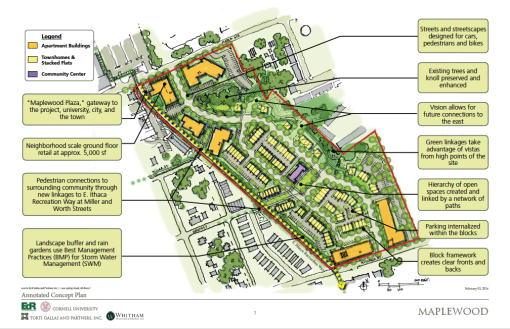
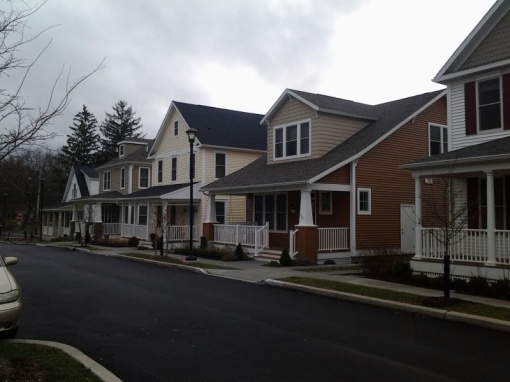
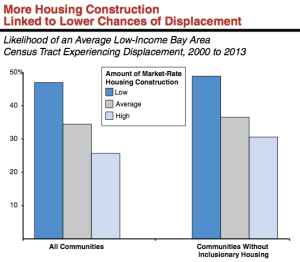
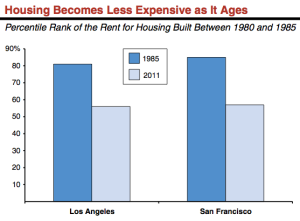

Not much to cheer about. Still even moderate progress is better than none.
The last item is interesting. I wonder if all the whiners on the IV facebook page might actually see the light with Cali legislature study. Seems like Jeff is quite the visionary.
I would venture (cynically) that the most vocal Ithacans tend to be so politically narrow-minded that they refuse to even entertain any ideas not 100% in line with their ideology. But Jeff was fairly open-minded even if things didn’t necessarily fit his political views. There was that Lofts piece, the editorial he okayed with Jolene about “I shouldn’t have to wait 20 months to buy a gun”…it forced the commenters to hear out the other side, even if they didn’t want to, and defend their political positions.
I feel his departure has caused a lot of that to be lost, the Voice is writing only what the vocal readership wants to hear rather than giving both sides of an argument a fair shake. The opinion pieces shouldn’t just be an echo chamber.
I couldn’t agree more.